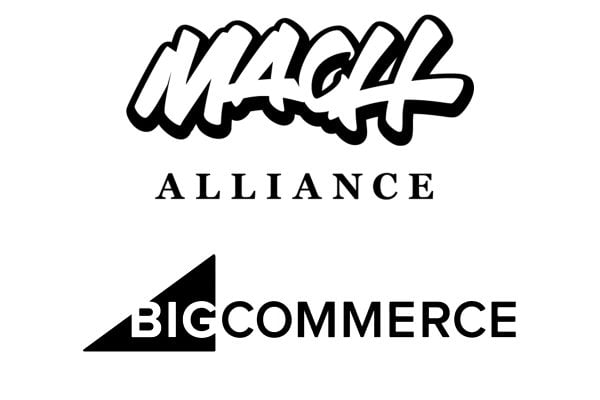You may have heard the term “Headless Commerce” and wondered what it’s all about. In simple terms, is the practice of separating the front end of your ecommerce platform from the back end. This helps businesses, especially independent retailers, to adapt quickly to changes in the market without the huge costs associated with changing a monolithic system – you can add functions to the back end without taking the front end of your website down and equally you can roll out new front end platforms (or make changes to existing once) without any back end coding required.
 Today, Eberhardt Weber, Founder and CEO of SAAS AG, a business which specialises in offering a cloud-native Headless Commerce microservices API platform that enables grocers to transform their supermarket business – Grocery Commerce Cloud – discusses the benefits of headless commerce. You may not be a grocer, but the same principles apply to all ecommerce businesses so read on to discover what headless commerce could do for you:
Today, Eberhardt Weber, Founder and CEO of SAAS AG, a business which specialises in offering a cloud-native Headless Commerce microservices API platform that enables grocers to transform their supermarket business – Grocery Commerce Cloud – discusses the benefits of headless commerce. You may not be a grocer, but the same principles apply to all ecommerce businesses so read on to discover what headless commerce could do for you:
Off with their heads: The death of monolithic ecommerce and the rise of a headless, microservice approach
For over a decade, online retailers have been competing in the Amazon world and, as the saying goes, it’s a jungle out there. Competition is fierce, the pace of change is electric, and disgruntled consumers have a raft of social media platforms for broadcasting their frustrations to the world at a moment’s notice. To add to the challenge, those consumers’ shopping habits are changing faster than ever before, with new communication channels and ways of transacting emerging all the time.
Take the global grocery market. In the online space, it is predicted to be worth $100 billion by 2025, and while this growth is good news for those retailers who are capable of expanding online, Amazon is still predicted to be the dominant market player, with the company already claiming 18% of the market.
An existing emphasis on marginal gains looks likely to become more important than ever before as we head into a new decade. Online retailers will have to move ever more quickly to embrace new technologies and meet changing consumer demands without disrupting their operations or impacting service levels.
Retailers with the most agile ecommerce platforms have the best chances of competing effectively, both with Amazon and other major players. However, a retailer’s ability to be agile is often negatively affected by the way its ecommerce platform operates in the first place.
The legacy of monolithic ecommerce
Traditional ecommerce platforms are products of the waterfall development era and were created to support websites which were primarily accessed via desktop computers. As a result, they serve as all-encompassing systems for the website front-end and back-end, covering everything from back office systems to all elements of the online shopping experience. Product listing; stock management; transactions; dispatching – all are managed through a single system.
This worked very effectively for many retailers in the early stages of online commerce. A single ecommerce platform was responsible for managing all aspects of their online operation, and this brought welcome ease and clarity at a time when the creative and commercial potential of ecommerce was only just being realised.
However, time doesn’t stand still. In 2016, mobile internet usage globally overtook desktop for the first time and the consumer hasn’t looked back since. This shift and its resulting impact highlighted a major weakness of early ecommerce technology. The highly complex and interconnected nature of all-encompassing monolithic ecommerce systems means that making any changes to any aspect of the ecommerce process quickly becomes very complicated, with multiple knock-on effects. Make a change to the customer database for example, or the online cart and check-out process, and the impact of those changes must be carefully managed across the interconnected parts of the monolith.
It is now said that over half of the traffic to online stores comes via mobile devices. As such, the changes retailers may wish to make to their ecommerce operation have increased in both volume and complexity. No retailer is likely to leave its ecommerce operation ticking over without alteration for months on end.
Imagine a grocery store that has a monolithic ecommerce platform in place. It wants to find a more effective way of combining its orders and is aware of applications which can help it to manage this process. However, taking advantage of the latest technology in this area will be frustratingly complex, with the developer in question forced to ensure that their software can work alongside the monolithic ecommerce infrastructure already in place. In turn, this means higher costs and a longer process – and a longer process means that the grocery store is all too likely to be late to the party. As mentioned above, in today’s dynamic and competitive ecommerce environment, time to market and being an early adopter of new innovations is essential. Best case scenario for this retailer? It eventually managed to catch up with competitors but is left counting the lost opportunity associated with its inability to adapt quickly. Worst case scenario? Our grocery store is unable to make the change and risks a permanent loss of competitive advantage.
A microservice, headless commerce approach
What, then, is the alternative? The key attributes required by a modern ecommerce solution are agility – so that online retailers can make changes rapidly and stay one step ahead of the competition – and flexibility – so that online retailers can deploy a range of different tools and applications, continually innovating and engaging with their customers.
Enter headless ecommerce. This term describes the replacing of monolithic ecommerce infrastructure with something far more modular. Rather than an all-encompassing system, imagine splitting off the back-end ecommerce systems from the various front end services and applications. Each of these elements become separate touchpoints.
One touch-point, for example, might be a separately designed and managed website or native mobile app, functioning as a single digital storefront for a group of physical stores (not all of which necessarily have to be involved in the processing, picking and dispatching of online orders). This gives customers cleanness and clarity. In the separated back-end, a ‘microservice’ might manage the online basket and checkout processes. Each microservice stores its own data but is able to share information via Application Programming Interfaces (API), meaning they can all function together as a complete ecommerce system.
This combined approach of a separated front-end and back-end system (the headless commerce approach) and the use of microservices, especially within the back-end infrastructure, brings multiple advantages. First, it means that if changes are required to a single microservice, or if the retailer wishes to roll out new technologies, these can be deployed at much greater speed and at a significantly reduced cost, because there is only one microservice or touch point to work with, rather than a huge set of interdependent systems. Second, it makes it far easier for retailers to work with an array of creative and technical agencies, because they are not restricted to working with a single monolithic ecommerce platform.
Returning to the online grocery sector, MPREIS, an Austrian chain of over 280 stores, is a great example of ecommerce in practice. It has meant the group can customise its websites and other communication channels using specialist agencies and partners. These individual touch-points can be developed to maximise user experience with information then shared between these front-ends and a core back office by using a range of APIs.
As we head into a new decade, retailers are certain to be under greater pressure to adapt their online presence than ever before. Engaging and creative ecommerce websites with sophisticated mobile functionality are no longer a nice-to-have – they are essential. New methods and channels for interacting with customers are emerging all the time and those with monolithic ecommerce infrastructure will face problems keeping up.
A headless commerce approach, driven by agile microservices and connected by APIs, provides a way to remove these constraints and remain competitive.







One Response
Monolith vs dozens of microservices. Same thing really. The latter can offer more flexibility but much more complexity at the same time. I’m old school so prefer the skinny monolith approach.